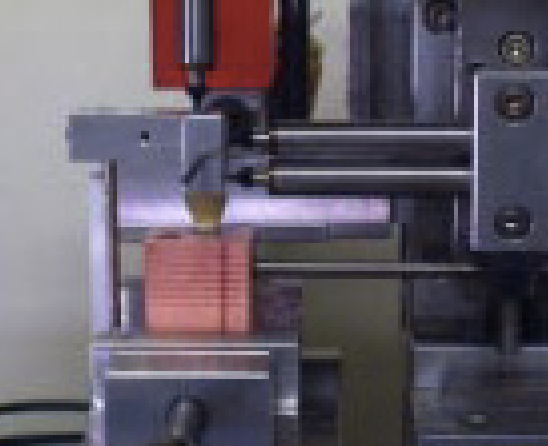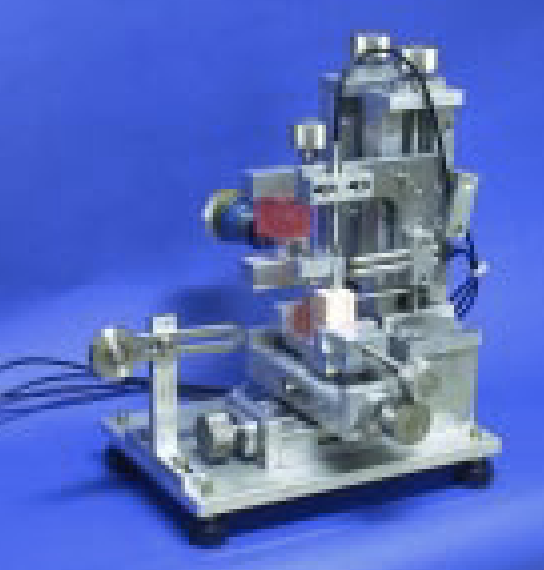Compact Gaging LVDTs Fit Around Tooth
The Dept. of Orthodontics at Yonsei University, Seoul, Korea, has developed a sophisticated test rig to perform in-depth dental experiments. The combination of this cutting edge hardware and innovative test procedures brings testing in this field to a new level. While previous setups used finite element methods or double exposure laser interferometry to make static measurements, this system, designed by Dr. Kwangchul Choy, monitors minute tooth movements noninvasively and in real-time.
In designing this system for optimal results, it was important to establish multiple points of data collection. The unique configuration of the Model 0351-0006 DC-DC Gaging LVDT – with its compact 3/8” OD gaging head – allowed for placement of three individual units in close proximity to each other. Each spring-loaded tip makes contact with a metal block fixture, which is attached to the crown of an extracted upper canine.

The tooth is embedded in a dental stone through a thin layer of silicone, thereby simulating the physiological mobility of the tooth. A horizontal load is created by attaching a fixed pulley and weight assembly to the block. A torque gauge is used to apply a known force to the block through a flexible coupling. This is equivalent to varying the location of the force system or moving a dead weight up and down. The LVDTs measure the angle of rotation of the block – and hence the tooth – as it changes with location of the applied force.
The signal from each transducer is fed into a computer via an analog-to-digital converter. That information is stored, calculated and plotted to show the axis and angle of rotation of the tooth in real-time.
As Dr. Choy discovered, the Model 0351- 0006 offers the equally important benefits of precision linear feedback in a small, manageable package.
